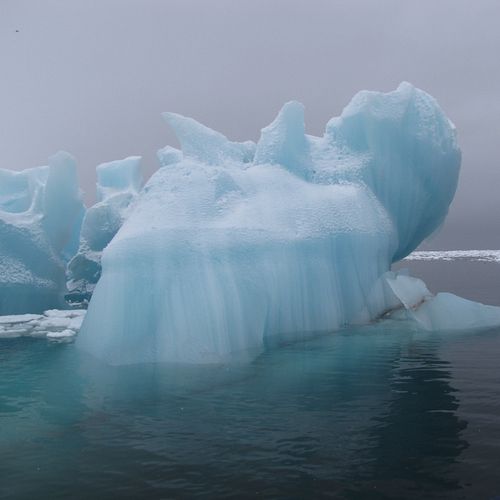20. mai 2022 nyhet
The Polar Front project (2021-2024) is heading towards the polar front of the Barents Sea with the research vessel R/V Helmer Hanssen. The project will investigate the pelagic ecosystem using technologies like remotely controlled gliders alongside tradition sampling methods from the research vessel.

We know the polar front is sensitive to changes, but not how much and in what ways
The scientist will examine all living things in the ocean at the polar front, from the smallest bacteria to the large whales. This is the first of three research cruises in the project. They will study the seasonal variations of the ecosystems and the abiotic factors as currents, salinity, temperature and nutrition availability.
The polar front is not only a project, but also the area surrounding the poles where cold polar air and sea meet the warmer air and water. Our knowledge from this area is incomplete and the project wants to fill in some of the knowledge gaps. The border of the polar front is where the denser and warmer Atlantic water meets the lighter and colder polar water. As you can see from this picture below the “border” is not straight down, but diagonally.

New applications of new technology to map both the physical properties of the ocean and living organisms are interesting for the energy industry
As we humans are using more and more of the remote areas of our globe the chances of industry breaking grounds in these areas are also larger. In the future this might also include the Polar Front. We therefore need more knowledge on biological and physical boundaries in the vast areas of our planet.
The project has two partners from the energy industry. Their interest lies in exploring the use of autonomous technologies to monitor and explore remote areas, and also in gaining more insights into the ecological importance of the polar front region improve ecological informed risk assessments for their activities.

The first two days onboard
On board are 23 scientists, students, and technicians living together with the vessel crew of 11 people. The first day of the cruise was spent setting up the labs and strapping it down to secure them against the movements from the waves. After security rounds with trying on survival suits and walking the different emergency exit routes, several went to their cabins to battle their seasickness.
This evening Helmer Hansen will reach the first station at approximately 75 degrees north and 30 degrees east. Here the scientist and students will do their first samplings working into the night. The day has been spent preparing the equipment for the first station. The next few days will show how far north the vessel can reach. Right now, the ice is covering the areas where the next stations are.


The Polar Front project is led by Akvaplan-niva and research partners are UiT the Arctic university of Norway, The Norwegian Polar Institute, The Scottish Association for Marine Science, Institute of Oceanology and Memorial University of Newfoundland. Industry partners are the energy companies Equinor and ConocoPhillips.
This article is written by Sunniva Katharina Thode (UiT) and has previously been published here: https://blogg.uit.no/bfebackst...
More info about the Polar Front project: https://www.akvaplan.niva.no/e...

